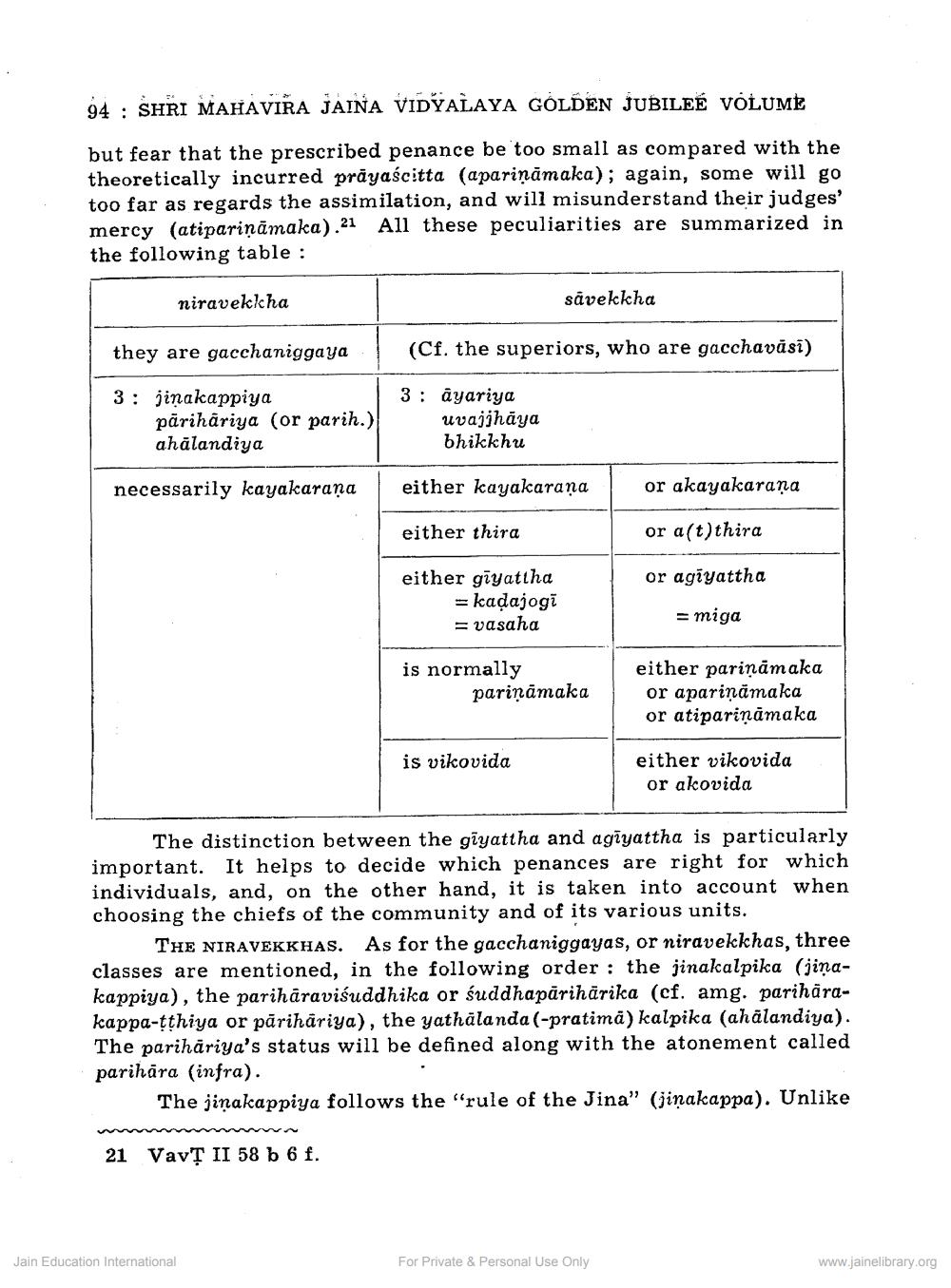Book Title: Religious Prayascittas according to old Jaina Ritual Author(s): Collete Caillat Publisher: Z_Mahavir_Jain_Vidyalay_Suvarna_Mahotsav_Granth_Part_1_012002.pdf and Mahavir_Jain_Vidyalay_Suvarna_ View full book textPage 7
________________ - 94 : SHRI MAHAVIRA JAINA VIDYALAYA GOLDEN JUBILEÉ VOLUME but fear that the prescribed penance be too small as compared with the theoretically incurred prāyaścitta (apariņāmaka); again, some will go too far as regards the assimilation, and will misunderstand their judges' mercy (atipariņāmaka).21 All these peculiarities are summarized in the following table : niravekkha sävekkha they are gacchaniggaya (Cf. the superiors, who are gacchavasi) 3: jinakappiya pärihariya (or parih.) ahālandiya 3 : ayariya uvajjhāya bhikkhu necessarily kayakarana either kayakarana or akayakaraņa either thira or a(t)thira or agīyattha either giyattha = kadajogi = vasaha = miga is normally pariņāmaka either pariņāmaka or apariņāmaka or atipariņāmaka is vikovida either vikovida or akovida The distinction between the gżyattha and agīyattha is particularly important. It helps to decide which penances are right for which individuals, and, on the other hand, it is taken into account when choosing the chiefs of the community and of its various units. THE NIRAVEKKHAS. As for the gacchaniggayas, or niravekkhas, three classes are mentioned, in the following order : the jinakalpika (jiņakappiya), the pariharaviśuddhika or śuddhapăriharika (cf. amg. parihārakappa-tthiya or părihāriya), the yathalanda (-pratima) kalpika (ahālandiya). The parihāriya's status will be defined along with the atonement called parihāra (infra). The jinakappiya follows the 'rule of the Jina" (jinakappa). Unlike 21 VavŢ II 58 b 6 f. Jain Education International For Private & Personal Use Only www.jainelibrary.orgPage Navigation
1 ... 5 6 7 8 9 10 11 12 13 14 15 16 17 18 19 20 21 22 23 24 25 26 27 28 29 30
